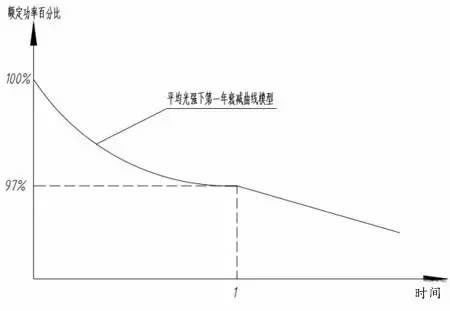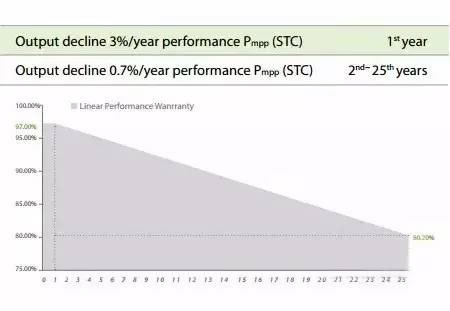With the advent of the photovoltaic era, the installation of photovoltaic power generation systems by every household is not only a means to make a fortune, but also a major trend in household electricity use in the future. When it comes to the benefits of PV systems, we have to talk about the impact of the attenuation rate of PV modules. Today, we will come to understand the attenuation rate of components and the calculation method.
Definition of Photovoltaic Module Decay Rate
Photovoltaic module decay rate refers to the ratio of the maximum output power of the PV module under the standard test conditions (AM1.5, module temperature 25°C, and irradiance 1000W/m2) to the initial maximum output power of the start-up operation.
Determination of the attenuation rate of photovoltaic modules
Photovoltaic module attenuation rate can be determined by accelerated aging test method, field comparison verification method or other effective methods. Accelerated aging test method is the use of environmental test chamber to simulate the actual operation of outdoor irradiance, temperature, humidity and other environmental conditions, and double or tighten the relevant parameters such as control, in order to achieve a shorter time to accelerate the aging of the component degradation . After the accelerated aging test is completed, the power of the test component is tested under the standard test conditions. Based on the decay rate formula, the decay rate of the photovoltaic component power generation performance is determined.
The field comparison method is to start sampling of a sufficient number of component samples according to the installed capacity of the component from the date when the component is put into operation. The third-party testing laboratory is certified by the National Qualification Accreditation (CMA) and tested according to the method specified in the GB/T 6495.1 standard. After the initial maximum output power, normal power generation is performed in the same environment as other components produced in the same batch, and the maximum output power is measured again after one year from the date of operation. Comparing the two maximum output powers before and after, according to the decay rate calculation formula, the attenuation rate of the photovoltaic module power generation performance is determined.

Note: The source of the above definition and calculation formula is Guonengfaxin No. [2017] No. 32 “Notice of National Certification Administration of the Ministry of Industry and Information Technology of the National Energy Administration on Enhancing Technical Specifications of Major PV Products and Strengthening Supervision Workâ€
Attenuation Analysis of PV Module Power
In practice, photovoltaic modules have been attenuated since they were manufactured. However, when the light is not visible in the package, it attenuates very slowly. Once it begins to receive sunlight, the attenuation will rapidly increase, gradually decay after a certain percentage of attenuation. The first year decay curve model diagram as shown in the figure below:

Photovoltaic module first-year decay curve model
The 3% total attenuation data for the first year in the above chart is taken from the 25 year attenuation guarantee of a company's PV modules. The 25 year attenuation guarantee is shown in Figure 4-2.

It can be seen that the photovoltaic power generation system can guarantee a power generation rate of no less than 80% for 25 years, and it can fully meet the daily household electricity demand.
DC Motor Ball Style Ceiling Fan Light
DC Motor Ball Style Ceiling Fan Light,ceiling fan light,chandelier fan ceiling fan light,slient design ceiling fan with light
JIANGMEN ESCLIGHTING TECHNOLOGY LIMITED , https://www.windfansummer.com